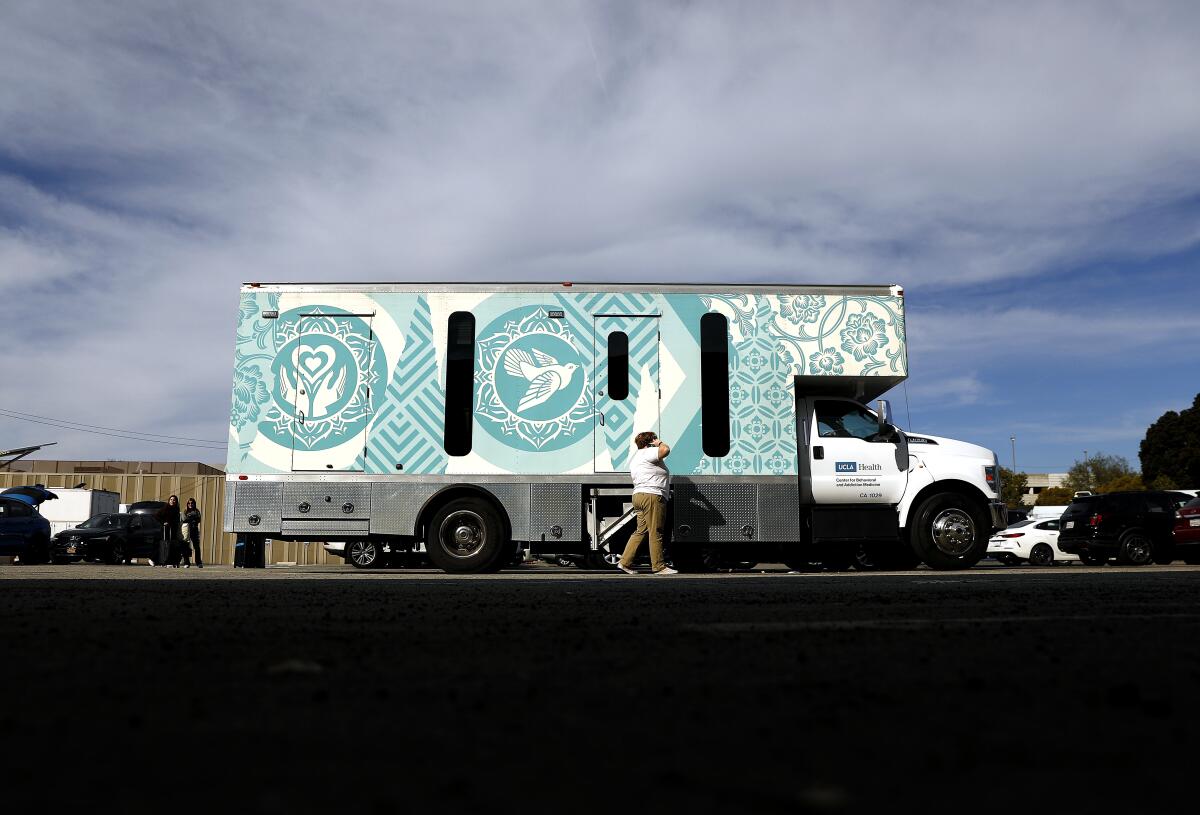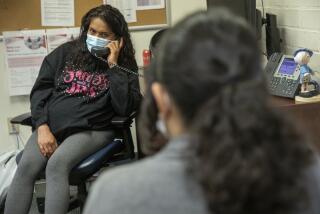Fewer Medi-Cal patients got crucial treatment for hepatitis C amid pandemic

Fewer people have gotten crucial medication for hepatitis C under Medi-Cal in recent years, troubling advocates who have pushed to expand the lifesaving treatment.
Hepatitis C, a slow-moving virus that can lead to liver cancer, cirrhosis and death, can now be cured in most cases with a few months of direct-acting antiviral medication. California has taken steps to dismantle barriers to obtaining the pills under Medi-Cal, the California Medicaid program, including eliminating requirements for prior authorization.
Yet the number of Medi-Cal patients getting the medications annually plunged more than 40% between fiscal years 2018-19 and 2020-21, according to data provided to The Times by the California Department of Health Care Services. The number remained flat the following year, hovering around 5,500 patients, and appears to have begun to rebound in this budget year.
State officials could not definitively say why that had happened, but said the drop was consistent with national trends during the COVID-19 pandemic, as fewer people got tested for the virus and many patients avoided healthcare.
The California Department of Public Health also said that as time has passed since the newer, more effective medications for hepatitis C became available, clinicians have reported that the easier-to-reach patients may have already been treated, and “those who remain untreated are those with the most barriers to treatment.”
The Department of Health Care Services, which administers Medi-Cal, said it is continuing to review data “to better understand potential barriers to care.”
DHCS “understands timely initiation of treatment is critical to reduce mortality, disparities and transmission, and will continue to provide education and outreach to Medi-Cal providers on available treatment options to encourage improving treatment rates for Medi-Cal patients,” it said.
It is unclear exactly how many Medi-Cal patients might be going without the needed treatment, DHCS said. In the past, researchers have estimated that more than 300,000 people are living with hepatitis C in California, and a state report found more than 35,000 cases of chronic hepatitis C were newly reported in 2018.
Those statewide figures are not limited to Medi-Cal enrollees, who are estimated to make up roughly one-third of the state population. But in light of those numbers, some experts were disappointed to see fewer than 6,000 patients in the Medi-Cal program getting the direct-acting antiviral medications annually in recent years.
“We’re just not treating enough people,” said Dr. Christian Ramers, an infectious disease specialist and chief of population health at Family Health Centers of San Diego. He faulted gaps in testing, connecting people to treatment, and having enough clinicians providing the care. “There has just not been a real, concerted effort to make hepatitis C treatment an easily accessible part of primary care.”
Los Angeles County also saw a drop in hepatitis C treatment: Prescriptions for the pills filled at retail pharmacies fell nearly 58% between 2019 and 2021, according to an unpublished analysis by USC and L.A. County Department of Public Health researchers. The numbers rose somewhat in 2022, but remained well under pre-pandemic levels.
The recent uptick in L.A. County and statewide is encouraging, but “there’s now a lot of people over the past three years of the pandemic who have forgone treatment and no one is reaching out to them,” said Dr. Jeffrey Klausner, one of the authors of that analysis.
Klausner, clinical professor of medicine, population and public health sciences at Keck School of Medicine of USC, lamented that “we never set up the approach with hepatitis C like we have for other infectious diseases, where we reached out to people to make sure they get treated. ... Someone untreated with hepatitis is at risk for spreading hepatitis to other people.”
Only a fraction of people infected with hepatitis C promptly start treatment in the United States, researchers have found. Many are unaware that they have it. Experts have faulted barriers in some insurance programs, scant investment by public agencies, complications in the process for obtaining the medication, and hesitancy among primary care physicians, among other obstacles.
Some Medicaid programs in other states still require patients to have suffered a minimum amount of liver scarring before they start treatment or impose sobriety requirements to obtain the pills, which were extremely expensive when they first hit the market and remain costly for many public programs. California eliminated such requirements in order to ease access, but experts said it is still hard for many patients to get connected to the care they need.
“California has been very proactive in reducing barriers. ... From an insurance perspective, there’s really no reason why people shouldn’t be getting treated” under Medi-Cal, said Dr. Prabhu Gounder, medical director of the viral hepatitis and respiratory diseases unit at the Los Angeles County Department of Public Health. Instead, “it’s these other issues.”
Anne Donnelly, co-chair of the California Hepatitis Alliance, said that “we’re seeing the most dramatic new increases in people with a lot of barriers to reaching healthcare,” including people who use drugs, who can be infected through shared needles. “It’s very, very difficult to reach people with the limited resources that we have in hepatitis C.”
The California Department of Public Health said it is funding 22 local health jurisdictions to offer testing, treatment and other services for the most vulnerable and underserved patients with hepatitis C, including in “non-traditional settings” such as drug treatment programs, mobile health vans, street outreach and syringe services programs. The department has also been promoting routine, opt-out testing for hepatitis C and other viral illnesses in emergency departments, to make sure that more people know their status and get treatment.
UCLA Health has a rolling clinic that is part of a study assessing the effectiveness of a one-stop unit to link people who inject drugs to health services, including hepatitis C treatment. Klausner said USC and the L.A. County Department of Public Health are teaming up on an effort to bring treatment directly to patients, which could launch later this year.
When the public health department finds out someone is infected, Klausner said, it would “mail you the medicine. Uber a package. Deliver you the medicine directly. They could meet you at your work. If you’re unhoused, it could be where you’re staying.”
And Ramers said he was encouraged to see that Dr. Francis Collins, former director of the National Institutes of Health and a special projects advisor to President Biden, has been working on a national initiative to tackle hepatitis C.
Donnelly said that as a slow killer, hepatitis C is often not treated as an emergency, “in spite of how horrific it is and how much cost it has to the healthcare system and how many lives it ruins and how many people it kills.”
It’s not like “the big tsunami that you can see,” Donnelly said. “It’s the bottom part of the iceberg.”
More to Read
Sign up for Essential California
The most important California stories and recommendations in your inbox every morning.
You may occasionally receive promotional content from the Los Angeles Times.











